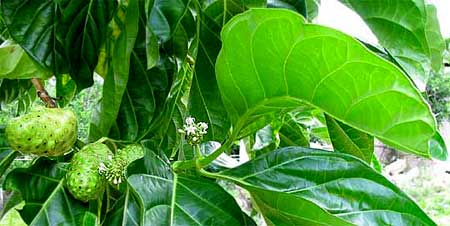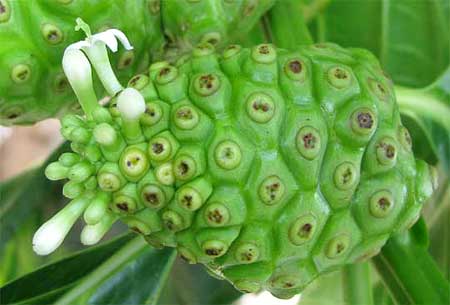
In fruit markets sometimes you see heaps of greenish-yellow, potato-size fruits of a kind that until just a few years ago were never seen in this part of the world. It's one of those "wonder fruits with a great future" which from time to time get introduced with great fanfare as an "important, alternative, money-making crop." The fruits are produced by a small tree called Noni. Noni is Morinda citrifolia, a member of the large, mostly tropical Coffee Family, the Rubiaceae. Nonis are native to Southeast Asia and Australasia, but today it's not uncommon to see them growing next to Mayan homes in the Yucatan. Below you see some typical Noni leaves and immature fruits.

If you Google Noni fruits you'll find extravagant claims about their medicinal value and you'll see that much research has been done on the chemicals in them. The fruits certainly taste medicinal, more bitter than sweet. In fact, usually when I see them in markets they're just lying there rotting because very few people buy them. Some Noni producers say they've found markets for their fruits but others say they can't give them away. One Maya store-owner I know says he makes a drink from Noni juice, softening its bitterness with orange juice, and he looks like he's 45 but says he's 63, so...

Above you see an immature Noni fruit with flowers attached to it. This picture explains why Noni fruits are so bumpy and each bump bears a little "eye." For, Noni fruits don't develop from single flowers. Rather, as the flowers on the left in the above picture show, each bump on a fruit develops from a flower's ovary. The Noni "fruit," then, is a "multiple fruit" consisting of several to many packed-together simple fruits. Mulberries, Osage Oranges, pineapples and figs are other examples of multiple fruits.